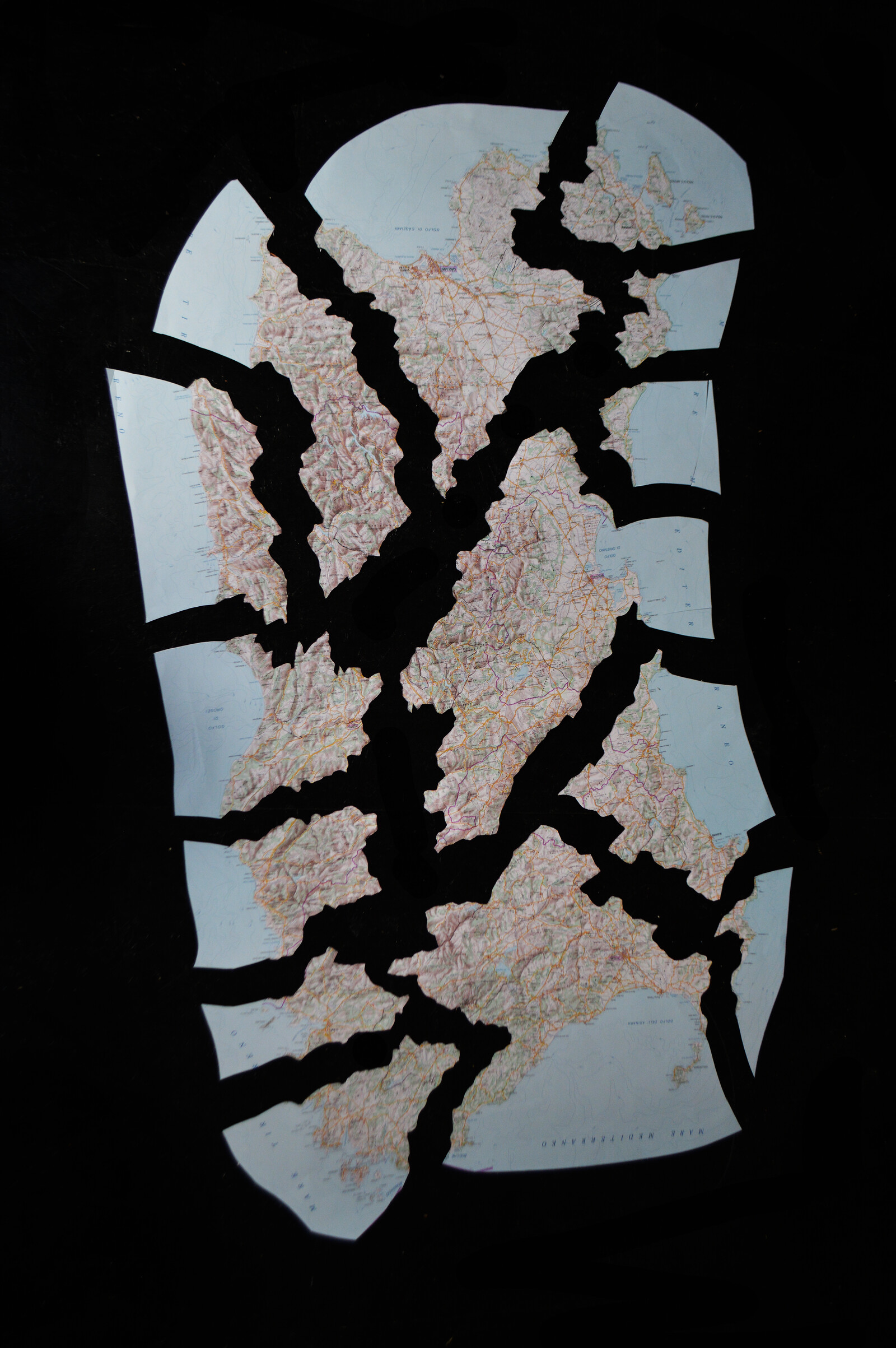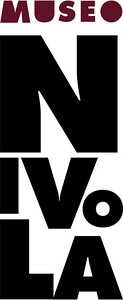AFRICA-ARCTIC FLYWAY
October 25, 2019–January 26, 2020
Curated by Elisa R Linn and Lennart Wolff
On behalf of a legally-incorporated company of visual artists, founded in 1980 and named “Ocean Earth,” Peter Fend, a US citizen born in 1950, presents solutions for the current climate and water crisis in Sardinia, to be extended along the bird and insect flyways between sub-Sahara Africa and the Arctic.(1)
All the work shown is the intellectual property of the company, named Ocean Earth Development Corporation, or its partly-held subsidiary of Latin Americans, named TVGOV. The solutions displayed cannot possibly be accomplished by Peter Fend. They cannot even be accomplished alone by the company Ocean Earth, plus TVGOV. They can be accomplished by the people of Sardinia. This exhibition at Museo Nivola, in Orani, Nuoro Province, is addressed to the people of Sardinia—with intention of follow-through action, for economic gain and ecological recovery, by the people of Sardinia. There’s plenty of meaningful and honorable work for everyone.
–Organize Sardinia into its salt-sea catchments, or hydrometric areas, with separation therein of any dammed catchments, which accumulate sediments and waste.
–Each catchment becomes a unit for resource management and taxation under principles of the first body of economic thought: Physiocracy. Land (& water) are declared to be the one foundation for economy, which must be preserved and improved. Since Physiocracy was conceived, in 18th-century France, surrogates for land have become the foundation of our economy: mineral fuels like coal, oil, gas—and uranium; and, in substitution of normal rivers, dammed reservoirs. These surrogates have no doubt harmed the planet’s ecology. They produce global warming, air and water pollution, eutrophication in streams, loss of animal diversity and deserts. Physiocracy can be launched in Sardinia to reverse such abuses of our land and water. This would be a world first.
–In each dam catchment, and each saltwater bay downstream, remove accumulated sediments and waste in the form of waterplants, grown with solar energy, and convert that into biogas or electricity. Feed the biogas into local methane supply streams, and send the electricity into local grids.
–Deconstruct high dams, restoring the original gradient with white-water rapids, collecting hydroelectric energy with suspended arrays of ultra-light Poncelet waterwheels suspended from Duchamp-model bicycle-wheel forks.
–In view of many technologies for energy for an island blessed with much sun, wind, waves, sea-currents, and soil now accumulating in dams or flowing offshore, we say, DO NOT build a long gas pipeline or LNG terminal, especially for imported fossil gas. Also, find ways to make the electricity from falling water not go through turbines at high-wall dams, but on no-blockage waterwheels. Rely on the many sources of easily-collected energy, especially since the island has the lowest population density of anywhere in Italy.
–Apply the same technologies in marshlands along migratory flyways. Single out salt lakes west of the Gulf of Gabes, Tunisia, Lake Chad, artificial lakes near Milan and on the Ruhr, and Norway’s fjords.
All action here, though based on what are normally assigned to art, is an extension of art into inhabited space, occupied through time. This is called Architecture. Leon Battista Alberti wrote that Architecture meets the needs of any inhabited area, in this case Sardinia, for clean air, living waters, ease of movement and defense. Ocean Earth has done research and developed plans for sites worldwide in all four sectors of Architecture. Almost no professionally-trained architect today does this. Can Sardinia, with its very low population density and already-established urban forms, largely on heights, become a model for Alberti’s principles. In this case, extending the practices along the bird flyway, to assure survival of nutrient-transferring migrants from African jungles to Arctic tundra, and back, is a form of territorial defense.
(1) The firm builds on structural and data display concepts right-negotiated with Dennis Oppenheim, Paul Sharits, Gordon Matta-Clark and Carolee Schneemann, plus invitations for real-world initiatives by Joseph Beuys (1980) and the United Nations Environment Program (1982, 1989, 2008). The firm has worked with scientists at Caltech (1980–94), oceanographers in Plymouth (2003–04) and then-named Leningrad (1980–82), and naval architect Marc Lombard, La Rochelle (1993–96). The firm has had a stormy history. Government interventions, such as seizure of observation-satellite data, led—inadvertently—to: a quick end to the Falklands war, Iran ending an Iraqi earthworks invasion, Iraq then deciding to invade Kuwait, and revelations to the world press, scientists and the Ukraine Government of an ongoing instability of reactor sites at Chernobyl, with long-term effects on water policy in the Black, Caspian and Aral Seas.


